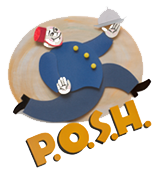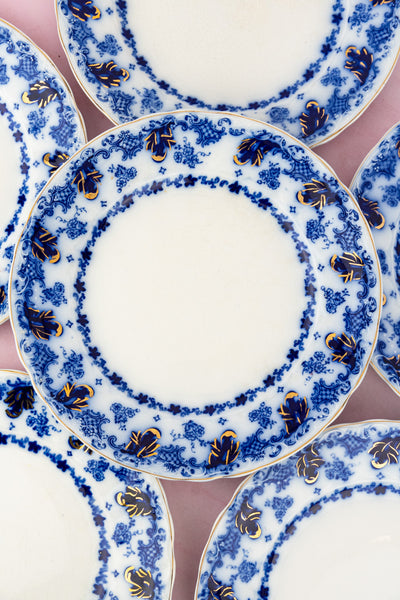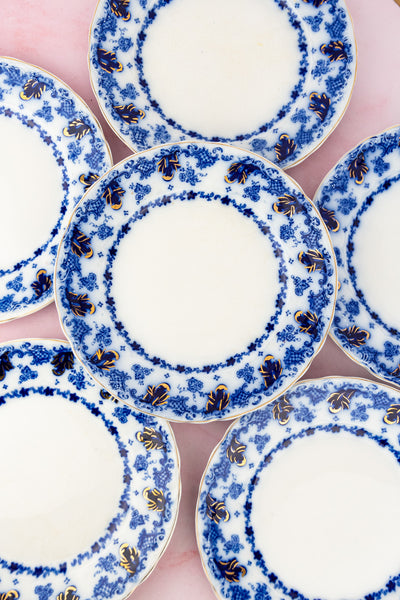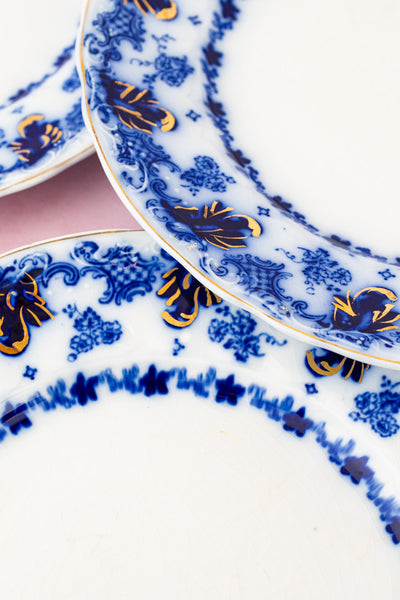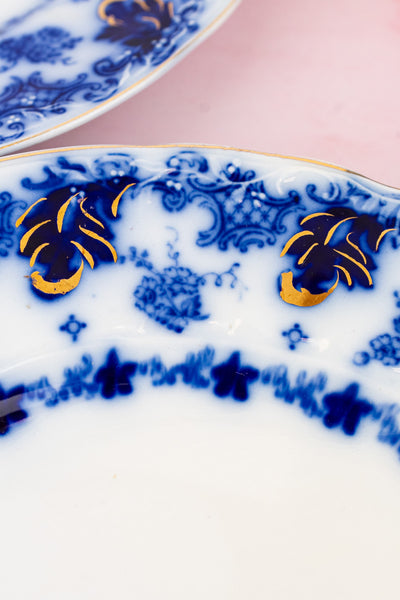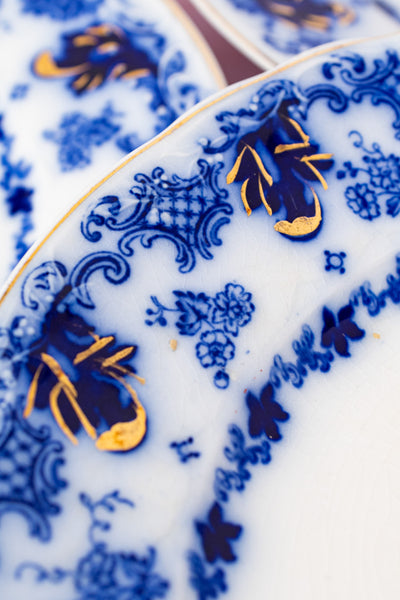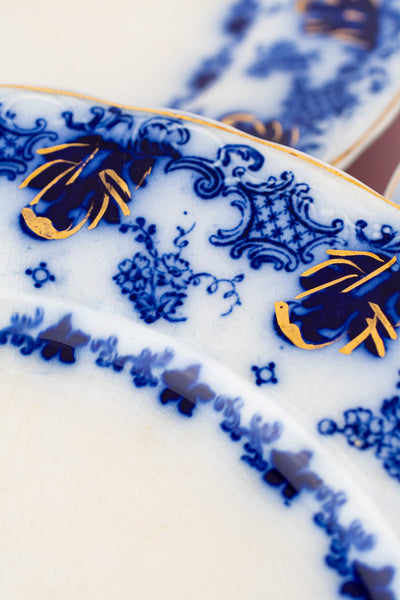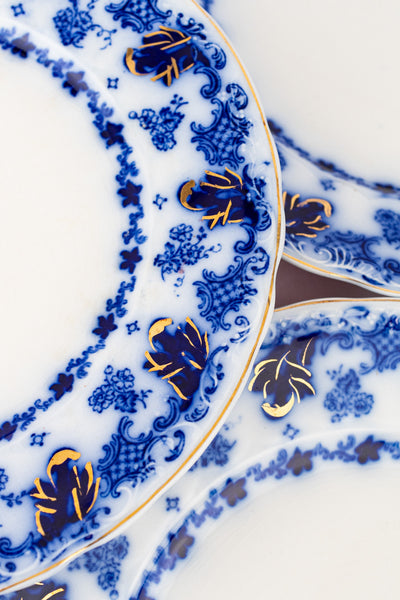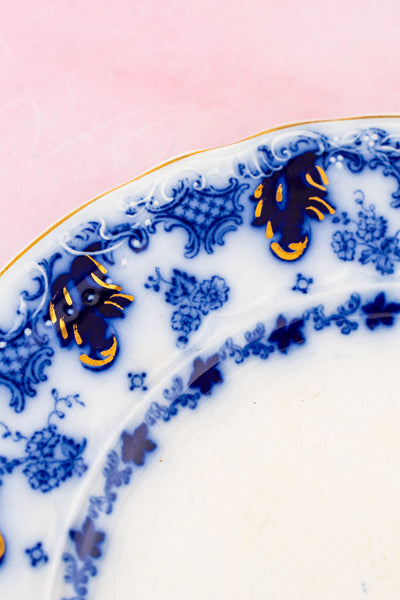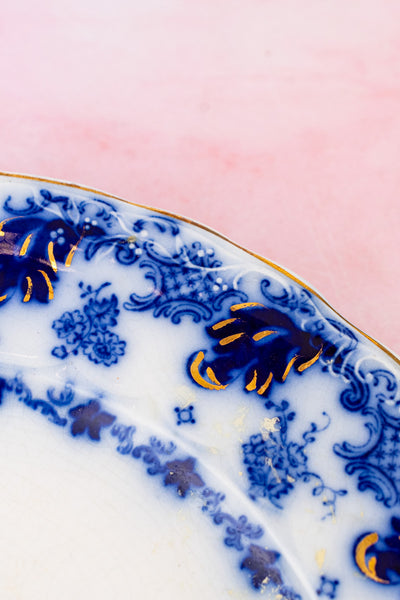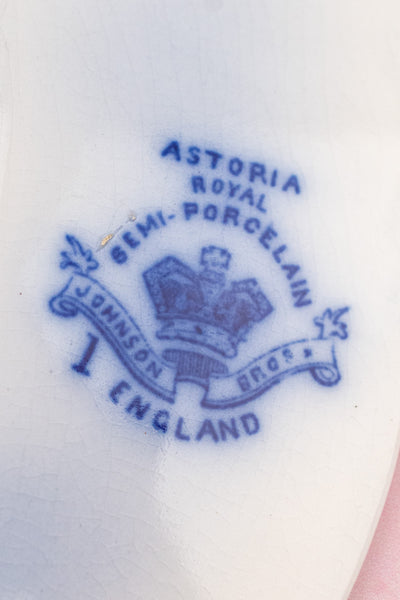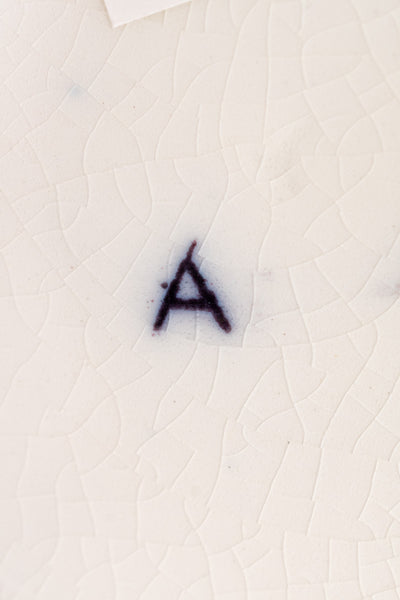Antique Flow Blue Dinner Plates - Set of 8
Antique Flow Blue Dinner Plates - Set of 8
$225.00
From Johnson Brothers of England, we are pleased to present this gorgeous set of 8 Dinner Plates in the charming Astoria pattern. The transferware pattern features a lovely flow blue pattern of flourishes and flowers surrounding the bright white porcelain, the decoration accented with gleaming gilt decoration.
Johnson Brothers was a British tableware manufacturer, known for its "semi-porcelain" earthenware and popular dinnerware patterns like "Eternal Beau" and "Old Britain Castles". Founded in 1883 by brothers Frederick and Alfred Johnson, the company expanded significantly, particularly in the US market, before being acquired by Wedgwood in 1968.
A lovely example of Johnson Brothers handiwork, these handsome antique plates have a scalloped edge with gilt along the rim, and are transferware decorated in the blurred shades of rich cobalt that have made Flow Blue such a beloved collectable. With bold details, these plates are certain to create a striking tablescape.
Strictly one-of-a-kind and subject to prior sale. In very good antique condition with light crazing. Handwashing recommended. Measures 9"D.
Learn More About Flow Blue
In the late 18th century, Chinese porcelain was an extremely sought-after product in England. The rich blue patterns, hand-painted on a bright white background, were very expensive and limited to the wealthier class.
It took over 100 years for English potters to duplicate the salt-glazed earthenware that created the brilliant white background, along with the application of cobalt oxide, the compound that produced the blue color in transfer printing inks. Cobalt oxide tends to bleed slightly when pieces are glazed and re-fired. The bleeding produced designs that appeared handcrafted, hid minor cosmetic defects, and thus looked more expensive. The blue could be made to “flow” even more by adding a cup of lime or ammonium chloride to the kiln during glazing.
It was sometimes difficult to control the amount of “flow.” Manufacturers ended up with large stocks of factory seconds rejected because the patterns were too blurry. Factory seconds were shipped to the US and sold cheaply in the American market. Here, flow blue became especially popular with the middle class who could now afford to buy these decorative items.
By the late 1800’s, more than 1500 patterns were available in flow blue. Early flow blue patterns mimicked Chinese imports, featuring imagery such as pagodas, temples, and mountains. Later, English pastoral scenes and floral motifs became fashionable.
Around 1915, most English manufacturers stopped making flow blue. The cobalt used by English potters came from Saxony in Germany, and World War I effectively cut off this supply.
(Flow Blue History courtesy of "Rhapsody in Flow Blue: The History of a Plate" by Mari Isa)
